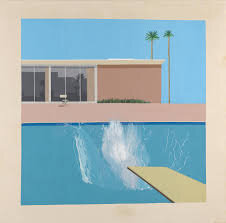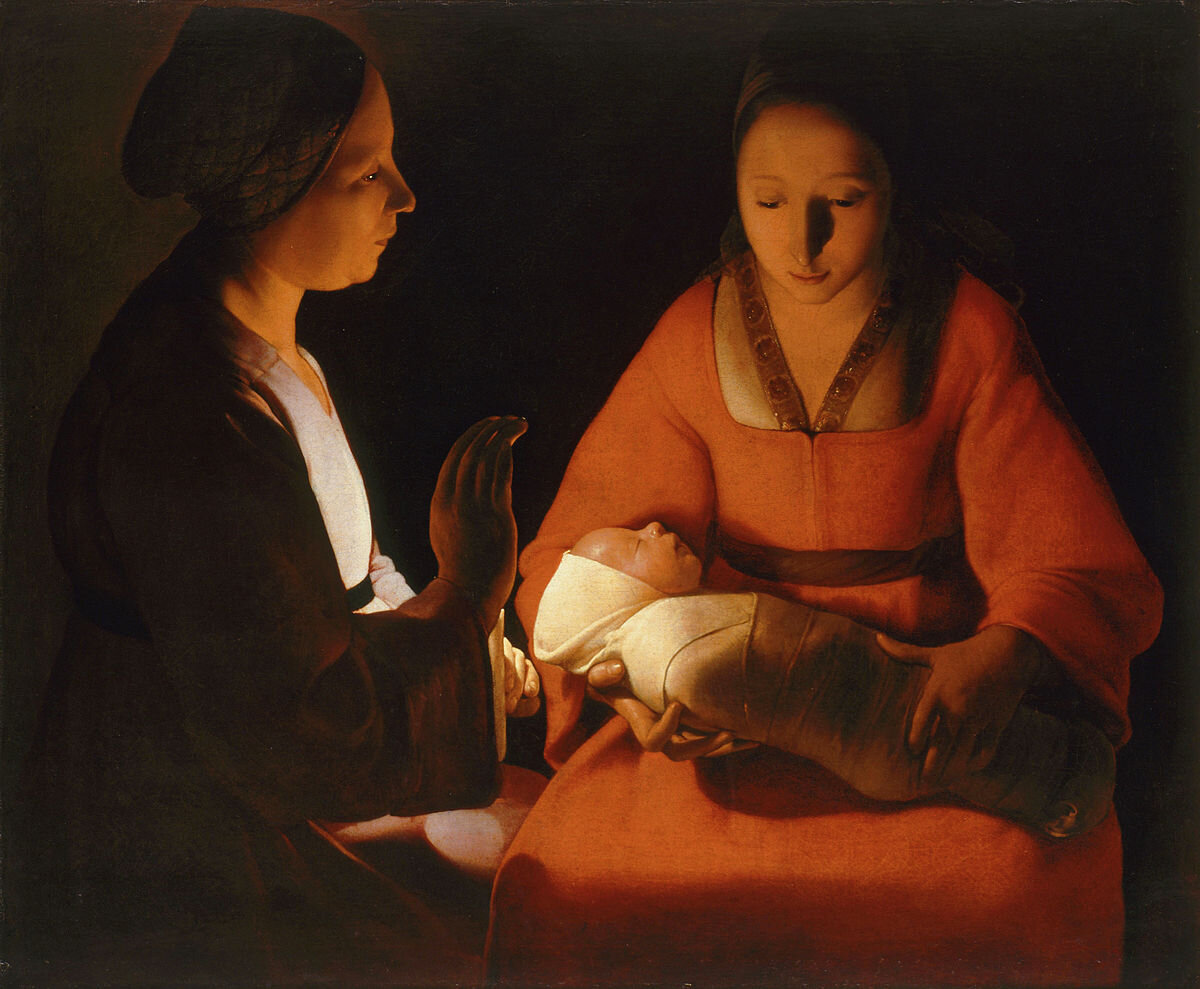A Bigger Splash, 1967 by David Hockney, Tate Gallery, London.
Hockney was interested in capturing a splash of water that only lasts for mere seconds and depicting it on canvas. Throughout his career he has done series on the same subjects.
Your Custom Text Here

A Bigger Splash, 1967 by David Hockney, Tate Gallery, London.
Hockney was interested in capturing a splash of water that only lasts for mere seconds and depicting it on canvas. Throughout his career he has done series on the same subjects.

Captain Kidd, 1907 by Howard Pyle.
Pyle was better known as an illustrator and this comes from the Book of Pirates, which he also wrote.

The Mermaid, 1910 by Howard Pyle, The Delaware Museum of Art.
This was the painting Pyle was working on when he sailed for Italy to study mural painting by studying the Italian Renaissance masters. He died while in Italy.

The Architect's Dream, 1840 by Thomas Cole, The Toledo Museum of Art.
On my final for intro to art history, I would always include this work which the students had not seen before and ask them to identify at least five styles of architecture - it was fun and a good way to end the exam.

The New-born, c. 1640 by Georges de la Tour, Musee des Beaux Arts, Rennes.
Often artists would mask religious scenes by setting them in the present and leaving out all of the traditional "signs" of a religious nativity scene such as a halo on the mother and child, but the calm the beauty and the presence of a figure who could be perceived as St. Anne, seem to indicate a religious meaning.

The Annunciation, c.1441-3 by Fra Angelico, Museo di San Marco, Florence.
Calm pervades the scene as Mary is informed by the Archangel Gabriel that she is carrying the child of God. St. Peter the Martyr (the patron saint of the inquisitive) looks on as she receives the news. Fra Angelico, a Dominican Monk, was known for his palette of pastels and serene depictions.
Commissioned by Cosimo de’Medici.

Composition 8, 1914 by Piet Mondrian, The Guggenheim Museum, NYC.
This is Mondrian's interpretation of a tree after seeing the cubist work of Braque and Picasso. He eventually took it to an even more abstract level.

Piet Mondrian Composition C (No.III) with Red, Yellow and Blue © 2007 Mondrian/Holtzman Trust c/o HCR International, Warrenton, VA

Dress 3 by Karen LaMonte, 2001. Fine Arts Museums of San Francisco.
LaMonte honors women, dresses and the art of glass in her work. You see the body beneath the garment, but the garment really is the star of the show.

Ballet Rehearsal 1874 by Edgar Degas. The Metropolitan Museum.
The teacher in these paintings was actually a dancer and friend of Degas and not the class teacher. His name was Jules Perrot.

La classe de danse (The Dancing class), c.1873-75 by Edgar Degas, Museé d'Orsay, Paris.
Degas had access to all areas of the dancer's world and took advantage of this capturing them at rest, rehearsing, performing and dressing. They were a subject he returned to frequently over the years.

The Sleep of Reason Produces Monsters from Los Caprichos,1799 by Francisco Goya.
Los Caprichos was a series of prints Goya produced after he had become quite ill and eventually lost his hearing. It seems he let his imagination run wild and captured all of these unfettered thoughts in this group of etchings.

River Trout , c.1830 by Ando Hiroshige.
Hiroshige is best known for his woodblock prints, but was also a skilled painter and wrote a book on fish.

Knucklebones, c. 1830 -1896 by Frederic, Lord Leighton, Private Collection.
Playing an ancient Greek game called Astragoli, the model looks like she is sleeping rather than playing a game. Leighton's models were often seen lounging in diaphanous gowns.

American Gothic, 1930 by Grant Wood, Art Institute of Chicago.
The "Gothic" in American Gothic refers to the window in the background of the painting. It is a style seen in Gothic churches with the point on the top. The woman is Wood's sister Nan and the man was the town dentist.

Red Hous, 1859 owned by William Morris, architect Philip Webb. Decorated by Morris & Co., National Trust, Bexleyheath, England.
A departure from the traditional Victorian style because it was open and full of light. Morris reaction to the industrial movement motivated him to hire artists and craftspersons to decorate the home and lead to the beginning of the arts and crafts movement.Interiors

Gamble House, 1908 by Greene & Greene, Pasadena, CA.
A masterful combination of arts & crafts and Japanese aesthetics, the Gamble House is one of the crowning glories of the movement that preached a return to skilled craftsmanship and creating beautiful, useful objects.

Dining Room, The Gamble House, Pasadena CA

Cat and Spider, c.1868 - 1912 by Oide Toko, The Metropolitan Museum.
From the Meiji period which began during the end of the feudal period and when Japan was exposed to the modern world. An eclectic mix of the ancient mix of the two worlds.

Three Black Cats by Maud Lewis, Art Gallery of Nova Scotia.
Canada's best known Folk Artist is Maud Lewis.The Art Gallery of Nova Scotia even has her small house which she decorated with her paintings restored and on display.

Maud Lewis House in the Art Gallery of Nova Scotia.


Halloween, 1955 by Anna Mary Robertson “Grandma Moses,” Copyright © 1984 Grandma Moses Properties Co. , The Bennington Museum, Bennington VT.
The Folk Artist known as Grandma Moses was 80 years old when she was "discovered" by a New York art dealer in 1940. For the next 20 years she painted and became a beloved American figure. She created over 1500 works although she did not begin to paint until in her 70's.


Madame Matisse, 1983 by Helen Frankenthaler, University Art Museum, University at Albany State University of New York
Frankenthaler was strongly influenced by Pollock, but took his methodology down a different road when she used raw canvas and began to work with the stains the paint caused as it soaked in.